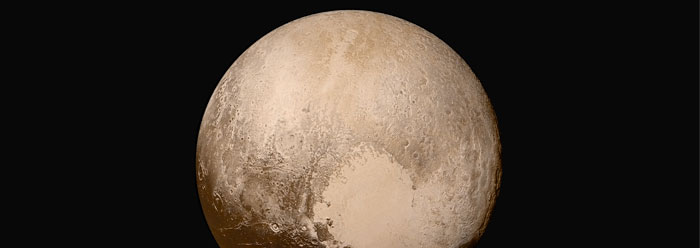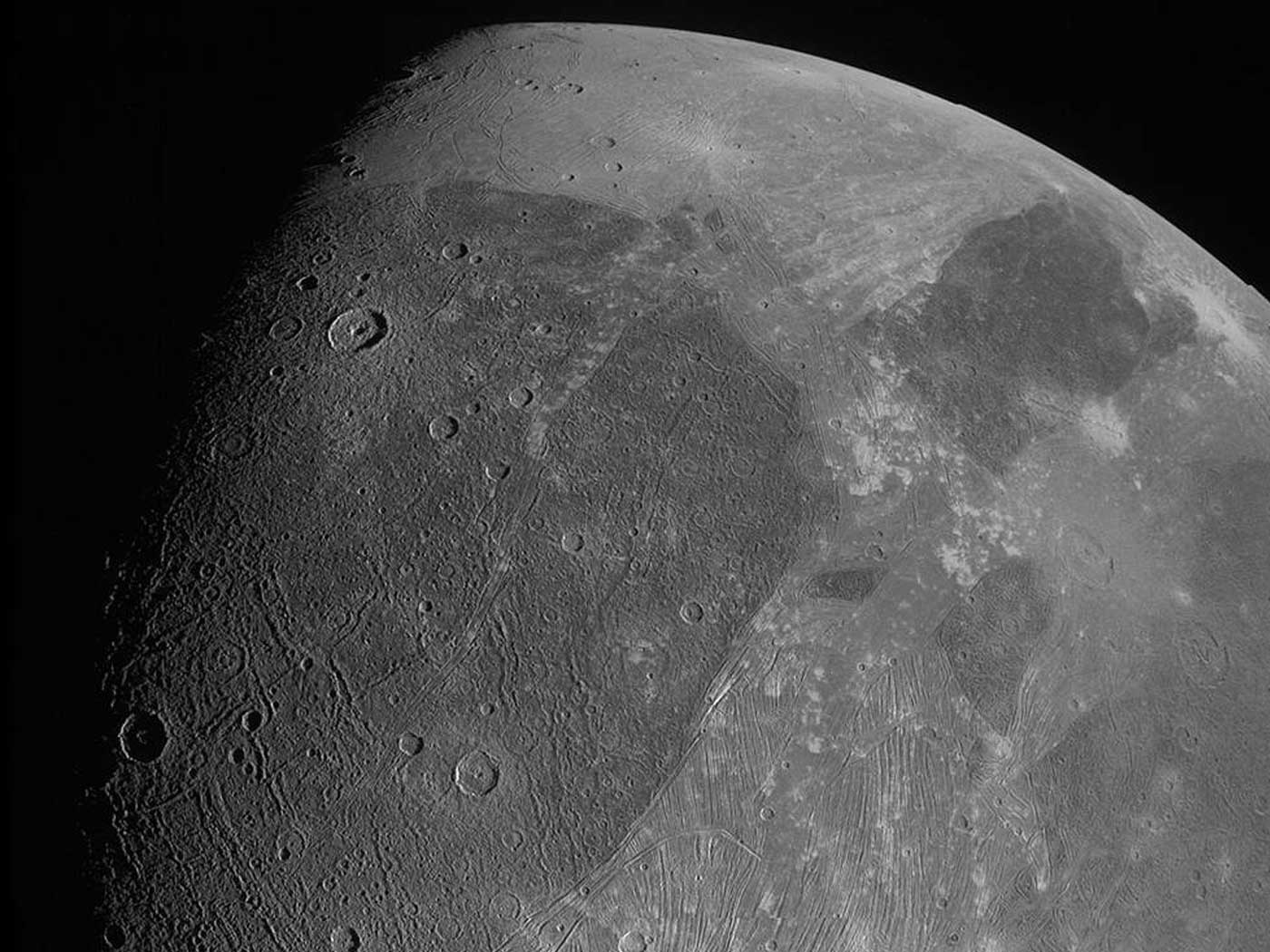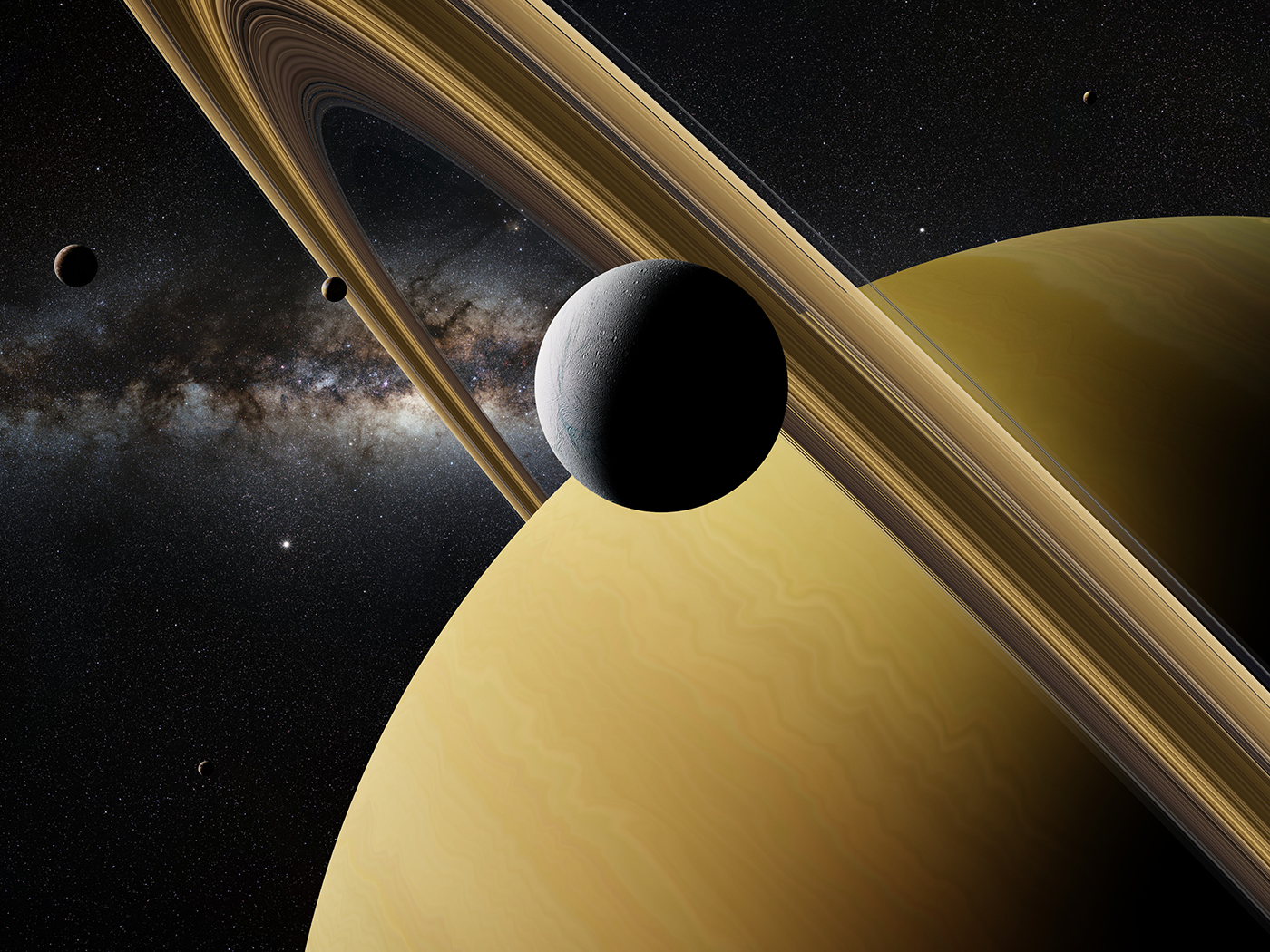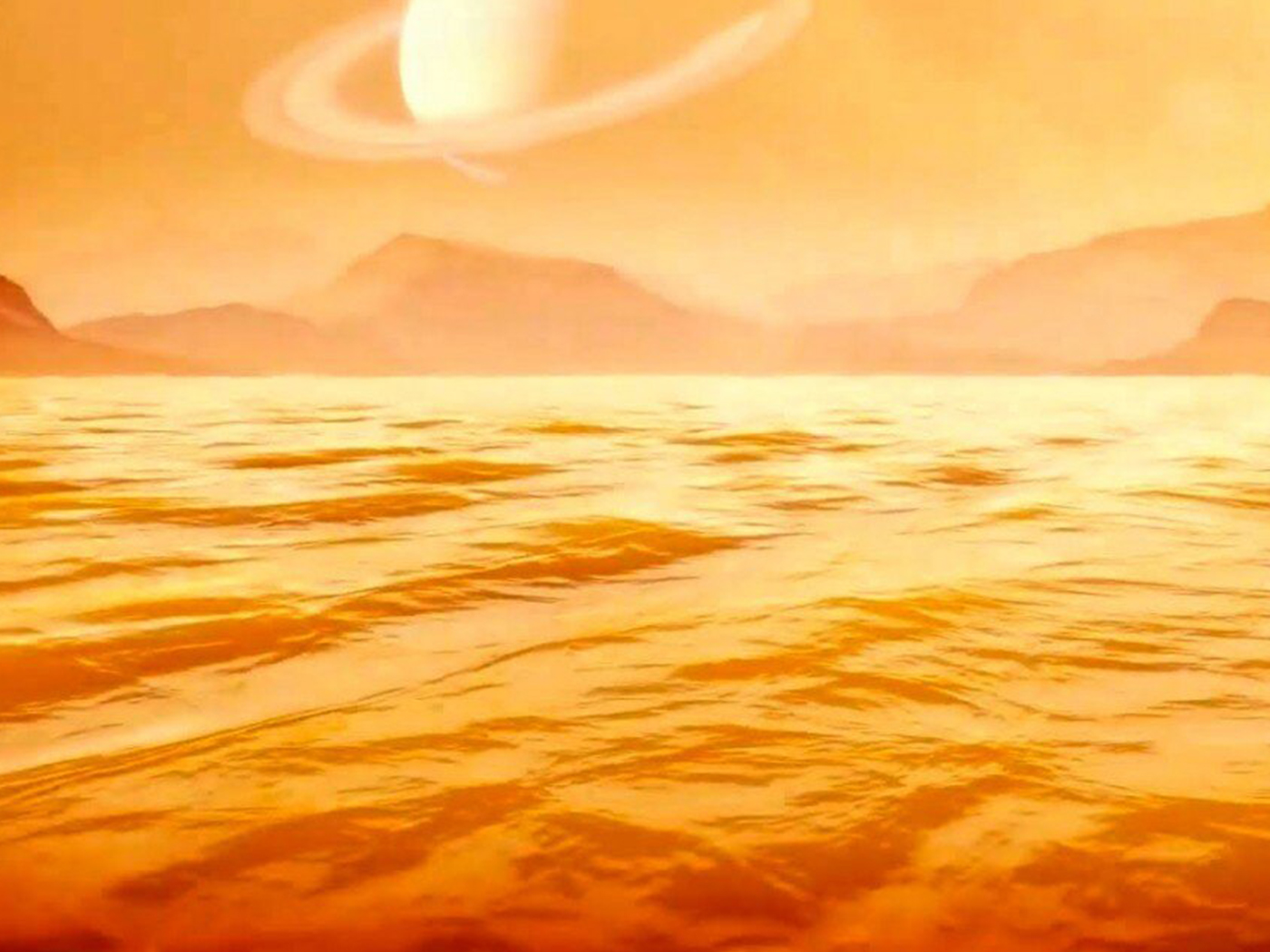Congratulations to the New Horizons team on their remarkable achievement of sending a spacecraft to Pluto. The mission was a complete success, and we are enjoying high-resolution images of never-before-seen surface features of this distant little world. These pictures dazzle the mind and are already beginning to challenge secular thinking.
The 1970s and 80s were an exciting time for astronomy enthusiasts. We were treated to the first detailed images of the outer planets of our solar system. Before then, we had only blurry and relatively small pictures of these giant planets, taken by earth-based telescopes. That all changed with the journeys of Pioneer 10, Pioneer 11, Voyager 1, and Voyager 2. For the first time in history, humans built machines that could travel to other planets, take high resolution photographs, and transmit them back to Earth. By 1989, all the classical planets had been visited and imaged by unmanned space probes—except Pluto.
Pluto was discovered in 1930 by Clyde Tombaugh. It appeared as a tiny speck against a myriad of background stars, distinguishable only by its change in position. Pluto is only 1,473 miles in diameter—about two thirds the size of Earth's moon.1 At an average distance of 3.6 billion miles from the sun, Pluto's surface features cannot be resolved even through the largest telescopes on Earth, and are only barely visible using the Hubble Space Telescope. The only way to know much about Pluto is to go there. Hence, the New Horizons mission.
The New Horizons spacecraft is truly an astounding achievement. It is a relatively small probe, about the size of a grand piano, and houses seven scientific instruments.2 The spacecraft launched on January 19, 2006 and traveled at a speed of over 30,000 miles per hour. It took nine years to reach Pluto. New Horizons is designed to record data at a high rate, and then transmit the stored data back to earth at a much lower rate. So, although the spacecraft was near Pluto for only a few hours, it will take many months before we receive all the images and other data.
Already we can see that Pluto is a world of vast diversity. It is reddish in color and has unexpected topography, including a large heart-shaped feature which the New Horizon's team has dubbed Tombaugh Regio in honor of Pluto's discoverer. Pluto has mountains that are comparable in size to the Rocky Mountains of the western United States. However, Pluto's mountains are thought to be made primarily of water-ice which, at the planet's cold temperature, are hard as rock. Tombaugh Regio is a large plain and exhibits a cellular pattern reminiscent of granulation on the sun. Such quasi-polygonal terrain is not found on any other planet of our solar system.
A delightful discovery is that Pluto has far fewer impact craters than expected.3 This is a serious challenge to secular thinking because any surface in our solar system that is billions of years old ought to have experienced many, many impacts. Lack of heavy cratering implies that Pluto's surface is relatively young. No surprise for biblical creationists.
There is substantial evidence of recent geologic activity on Pluto, which has obliterated many previous craters. This creates an additional problem for secularists. Pluto is far from the sun and small enough that it is difficult to imagine how it could maintain heat for billions of years. Radioactive elements like Uranium generate heat—but they are heavy elements. Because of its estimated lower density, Pluto must be made primarily of lighter elements.
Tidal heating is normally invoked to explain how a small outer solar system body can generate internal heat. But Pluto has no significant tides because it is locked into synchronous rotation with its largest moon, Charon. That is, both Pluto and Charon keep their same sides pointed toward each other as they revolve around their common center of mass. Of course, from a biblical perspective, Pluto may have some internal heat because it hasn't had sufficient time (6,000 years) to lose it. Biblical creationists are not surprised to find evidence of geologic activity on Pluto.4
Also, New Horizons has given us spectacular high-resolution images of Pluto's largest moon, Charon. It too has evidence of geologic activity. Charon has chasms, cliffs, and very few craters. The Pluto-facing hemisphere of this little moon has an enormous chain of cliffs and troughs that is nearly the diameter of Charon itself. Charon also has a dark region on its north pole—a unique feature in the solar system.
Charon itself is hard to explain from a secular point of view. It's half the diameter, and one tenth the mass, of Pluto. A large moon forming so close to Pluto is contrary to secular models. Therefore, most secular astronomers invoke the hypothesis of a giant glancing impact on Pluto to generate orbiting debris which then collapsed to form Charon. In this story, the rapid rotation of Pluto at the time should have caused it to condense into an oblate spheroid (a "squashed" version of a sphere) which then froze. The rotation would then gradually slow until Pluto became tidally locked with Charon. But the New Horizons team found that Pluto is very spherical.5
We eagerly await more discoveries from Pluto as the data continue to arrive, and we expect to see yet more examples of the Lord's creativity.
References
- How Big Is Pluto? New Horizons Settles Decades-Long Debate. News Center. Posted on jhuapl.edu on July 13, 2015, accessed August 3, 2015.
- New Horizons, NASA's Mission to Pluto: Mission, Spacecraft, Payload. Posted on jhuapl.edu, accessed August 3, 2015.
- Feltman, R. Pluto's surface surprisingly full of mountains and lacking craters. The Washington Post. Posted on washingtonpost.com July 15, 2015, accessed August 3, 2015.
- Hebert, J. 2015. New Horizons, Pluto, and the Age of the Solar System. Creation Science Update. Posted on icr.org July 14, 2015, accessed August 3, 2015.
- New Horizons, NASA's Mission to Pluto: Media Briefing July 24, 2015. Posted on jhuapl.edu on July 24, 2015, accessed August 3, 2015.
Image Credit: Copyright © 2015 The Johns Hopkins University Applied Physics Laboratory LLC. Adapted for use in accordance with federal copyright (fair use doctrine) law. Usage by ICR does not imply endorsement of copyright holder.
* Dr. Lisle is Director of Physical Sciences at the Institute for Creation Research and received his Ph.D. in astrophysics from the University of Colorado.
Article posted on August 13, 2015.



















